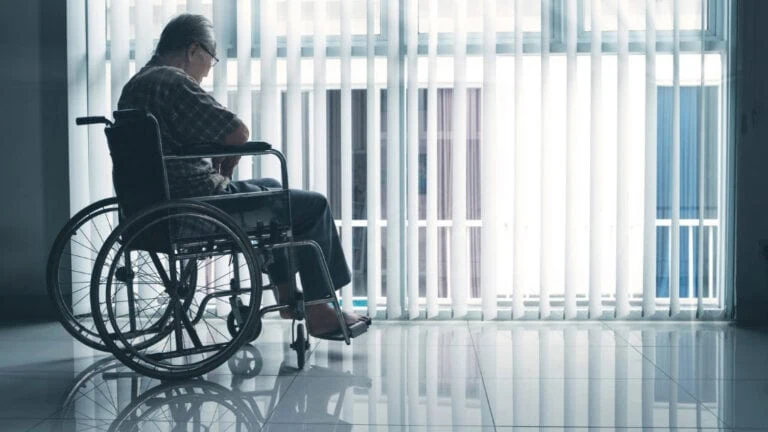Bedsores
Pressure ulcers, more commonly known as bedsores, most often happen to nursing home residents and even patients in a hospital setting. Bedsores are injuries to the skin and underlying tissues that result from prolonged pressure on the skin. With very rare exceptions, they are completely avoidable and unfortunately happen to our most vulnerable population, including the sick and the elderly.
Bedsores usually develop in areas of the body that are not well padded with muscle or fat and that lie over a bone, including the coccyx (tailbone), hips, heels and elbows. When the skin and underlying tissues are trapped between bone and a surface, such as a wheelchair or a bed mattress, the pressure may be greater that the pressure of the blood flowing in the tiny vessels (capillaries) that deliver oxygen and other nutrients to the skin and underlying tissue. When the cells of the skin and underlying tissue are deprived of oxygen and nutrients, those cells are damaged and may die.
Other Causes
Skin breakdown can also occur as the result of friction when a person changes position or is handled by care providers and their skin is dragged across a surface or shear when two surfaces move in the opposite direction (such as sliding down a bed with the head elevated; as the tailbone moves on its own the skin surrounding it may stay in place pulling on the opposite direction). The damage from both friction and shear can make skin cells more vulnerable to damage from sustained pressure.
Any patient who has limited or no ability to move or change position while seated or in bed is at high risk for developing of bedsores. Immobility may be due to general poor health or weakness, an injury or illness that requires bed rest, recovery from surgery, sedation or coma.
Other factors that increase the risk of bedsores include medical conditions affecting circulation, poor nutrition or hydration, urinary and/or fecal incontinence, age, a lack of sensory perception (common from many diseases or injuries), weight loss, excessive moisture or dryness, smoking, decreased mental awareness or muscle spasms.
Bedsores can develop quickly and are often difficult to treat. The most serious and life threatening complication from a pressure ulcer is sepsis. Sepsis occurs when bacteria enters the bloodstream though the broken skin and then spreads throughout the body. It’s a rapidly progressing, life-threatening condition that can cause organ failure and death.
Treatment
The treatment for bedsores is painful and requires the removal of damaged tissue. This involves surgical debridement, mechanical debridement (use of a whirlpool bath for example to remove the damaged tissue), or enzymatic debridement (involving the use of chemical enzymes to remove the damaged tissue). Maintaining appropriate nutrition and hydration, pain management and the use of antibiotics are typically an important part of the treatment protocol. In the worst cases, surgery may be performed to close open wounds with skin grafts.
Prevention and Early Detection
Since bedsores are much easier to prevent than treat, prevention is vital. One of the best ways to do that is to decrease the pressure to the most vulnerable areas of a patient’s body. This requires changing the patient’s position to divert pressure on the vulnerable areas or reducing the pressure from the surface. Turning and repositioning generally needs to be done at least every two hours but sometimes more frequently depending on the needs and risks of the particular patient.
Through the use of various cushions, specialized wheelchairs and mattresses or support surfaces, the pressure on the skin can be redistributed. It is also essential to protect and monitor the skin by using various moisture barrier or protective creams or lotions. It is also necessary to manage incontinence and to maintain appropriate nutrition and hydration levels.
The initial signs of skin breakdown include skin that appears red or purple and doesn’t blanchen (lighten) when touched. Damaged skin often appears as an intact or fluid filled blister or a shallow, pink-colored wound. The site may be painful, or different when compared to surrounding tissue – firmer or softer, warmer or cooler. Inform your or your loved one’s care givers or contact a physician immediately if there is any reason to suspect skin damage has occurred.
If you need an attorney to represent you, we invite you to consider Terrell Hogan. For a free consultation, call (904) 632-2424 or 1-(904) 632-2424 (toll free).
$1,700,000 Verdict
Wrongful Death
Six Figure Settlement
Wrongful Death
$600,000 Verdict
Construction Accident
$8 Million Settlement
Medical Malpractice
Six Figure Settlement
Nursing Home Abuse
$1,700,000 Verdict
Defective Product
$1,100,000 Settlement
Bicycle Accident
$1,100,000 Settlement
Defective Product
$1,500,000 Verdict
Auto Accident
$125,000 Settlement
Dog Attack
$500,000 Recovery
Business Litigation
$2.5 Million Settlement
Medical Malpractice
$1,300,000 Verdict
Medical Malpractice
$370,000 Recovery
Auto Accident


